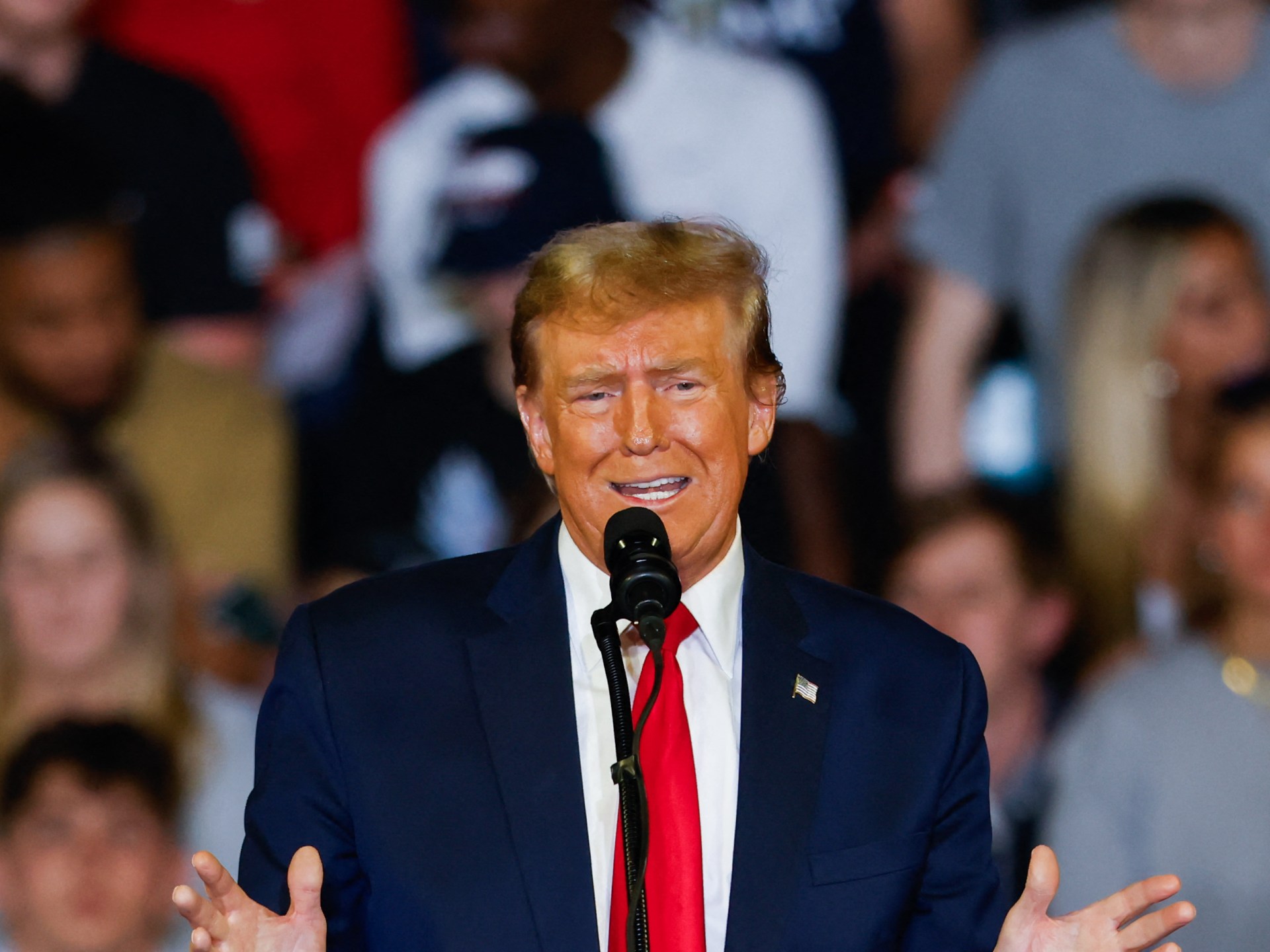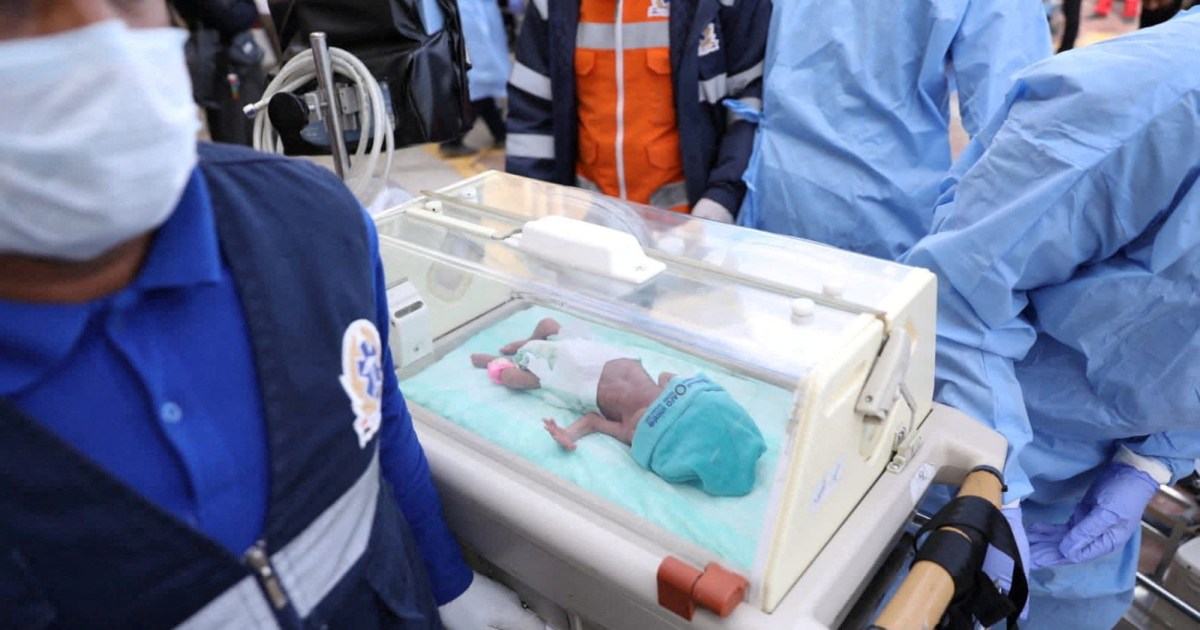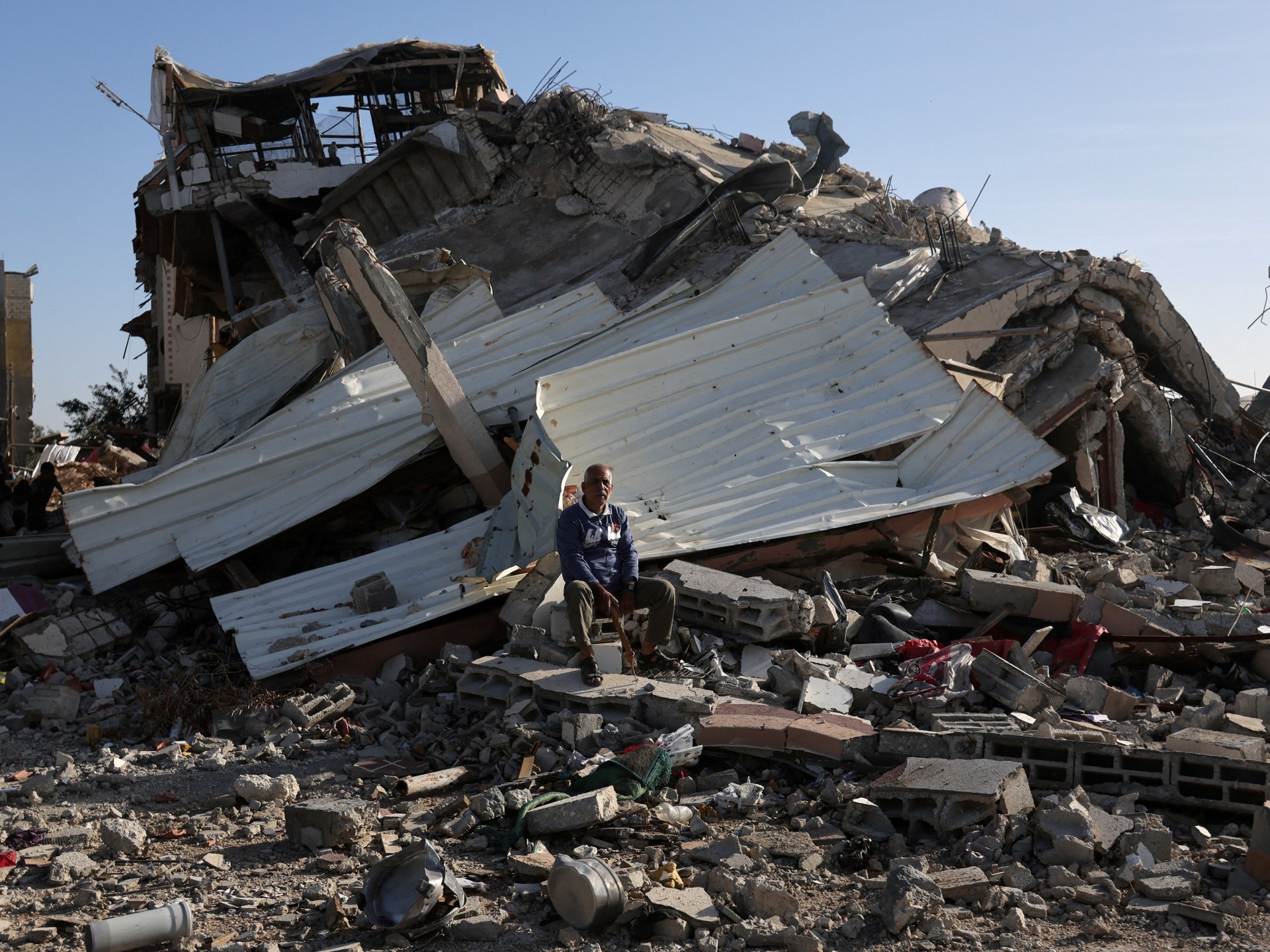
Former US President Donald Trump sparked strong reactions in Europe after he said Washington might not protect NATO allies from a possible attack by Russia if he wins November elections unless some members of the Alliance increases their military spending.
At a campaign rally in South Carolina on Saturday, the Republican Party’s presidential candidate said he told an unnamed leader of a “major country” that is part of NATO that he would “encourage” them. [Russia] to do whatever the hell they want” with nations that don’t spend enough on defense.
Founded during the Cold War, NATO is made up of 31 nations, all except the United States and Canada in Europe. According to Article 5 of the Treaty establishing the North Atlantic Treaty Organization, an attack on one member triggers a response from all.
Trump has made similar comments about other NATO members’ military spending before, including when he was president, saying the United States was unfairly shouldering the alliance’s defense burden.
But while the real estate developer-turned-politician’s rhetoric about the alliance remains unchanged, NATO members’ spending is different from what it was when Trump was in office.
A key reason: Russia’s war against Ukraine and the increased threat perception in Europe.
How much do NATO members spend on defense?
NATO defense spending declined sharply after the Cold War – from 4.1 percent of total gross domestic product (GDP) in 1990 to 2.6 percent in 2000 – even as the group expanded. To boost funding, members agreed at a summit in Wales in 2014 to contribute at least 2 percent of their GDP to the alliance by 2024.
Until 2017, when Trump was sworn in as US president, only four countries reached this threshold: the US, Greece, the UK and Poland. Since then, Trump has argued that the US needs to pressure its allies to increase their military budgets.
Seven years later, NATO’s military spending has changed significantly, although most members still do not allocate 2 percent of their GDP to defense.
By 2022, the number of NATO countries meeting this benchmark reached eight – the United States, the United Kingdom, Greece, Poland, Latvia, Lithuania, Estonia and Croatia.
Then, as the war in Ukraine continued and fears about Russian expansionism grew, more European members increased their military budgets. In 2023, the number rose to 11, with Hungary, Romania, Slovakia and new NATO member Finland all spending more than 2 percent, while Croatia was below the threshold.
Luxembourg (0.7 percent) spends the least relative to its GDP. Belgium (1.1 percent), Turkey (1.3 percent), Spain (1.3 percent), Slovenia (1.4 percent) and Canada (1.4 percent) are other member states at the bottom of the spending list stand.
But even as more NATO members increased their spending, the alliance’s dependence on the size and strength of the U.S. military has only increased.
The United States, whose military forms the core of the alliance, has consistently spent more than all other members combined. In 1990, the United States accounted for 61 percent of the alliance’s defense spending. By 2020, the US share rose to 70 percent.
How did the Ukraine war affect NATO spending?
Several NATO members announced that they would increase their defense budgets and achieve the two percent target after Russia’s invasion of Ukraine. France promised to reach the threshold in 2025, Italy in 2028, Spain in 2029 and Belgium in 2035.
In December the alliance announced a military budget of 2.03 billion euros ($2.4 billion) for 2024, an increase of 12 percent compared to 2023.
According to the White House, the United States has provided more financial aid to Ukraine during the war than any other country, totaling $44 billion as of 2022.
Experts said NATO was still falling short of its target in military spending by individual members and that the budgets of Western European countries further away from Russia, such as Germany, were among the slowest increases.
From 2021 to 2023, Berlin increased its spending in relation to GDP by 0.1 percent. Ukraine’s neighbor Poland, on the other hand, has almost doubled its spending during this time.
How might a second Trump presidency affect U.S.-NATO relations?
Trump’s recent comments have raised concerns within the alliance about possible disruption within NATO if he returns to power.
“Any indication that allies will not fight back undermines all of our security, including that of the United States, and puts U.S. and European soldiers at increased risk,” NATO chief Jens Stoltenberg said in a statement. The alliance has one in common 3.3 million military personnel.
Trump has had a difficult history with NATO for years, particularly when he was president.
In 2019, Trump told reporters that he withheld nearly $400 million in congressionally approved funding from Ukraine because other NATO members had not contributed.
“I would withhold it again, and I will continue to withhold it until Europe and other nations contribute to Ukraine, because they are not,” Trump said at the time. “Why is only the United States providing the money? Germany, France and other countries should provide money.”
Although Kiev is not a NATO member, it has been pushing to join the alliance for years, and NATO, for its part, has said protecting the country is its top priority. NATO had 12 members when it was founded in 1949, and analysts have pointed out that the alliance’s expansion to countries of the former Soviet Union has threatened Russia’s influence and angered Russian President Vladimir Putin.
Moscow said its neighbor Ukraine’s entry into NATO was a step too far. After Russia’s annexation of Crimea in 2014, NATO increased its aid to Ukraine. The alliance has also increased funding for Kiev since Russia began an all-out war in 2022.
Fellow Republicans denounced Trump’s comments on Saturday. Former South Carolina governor and U.N. Ambassador Nikki Haley, Trump’s only remaining challenger for the Republican presidential nomination, told reporters that the last thing the U.S. wants to do is “side with Russia.”
“Don’t side with someone who invaded a country and left half a million people dead or wounded,” she said, referring to Putin.






Recent Comments